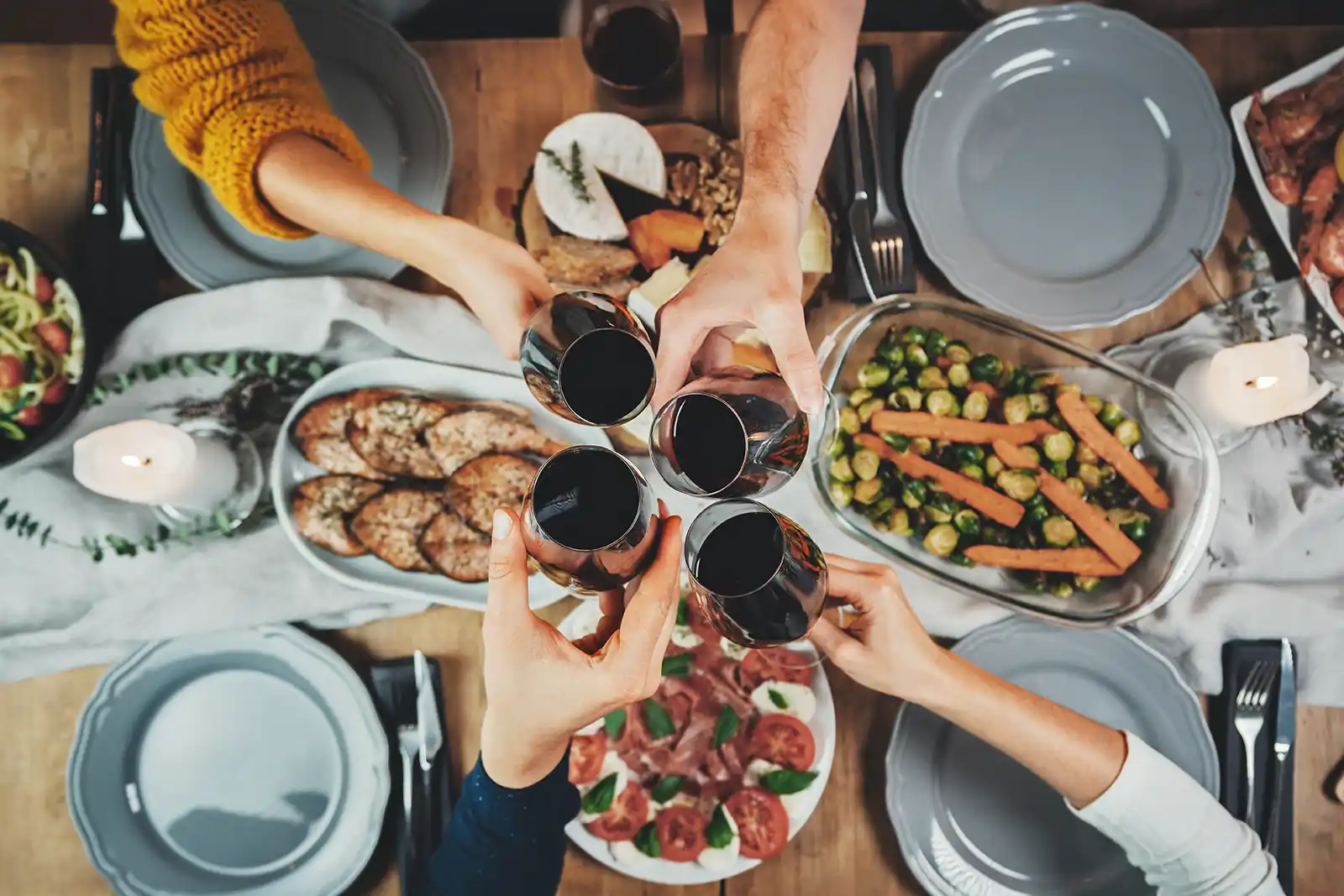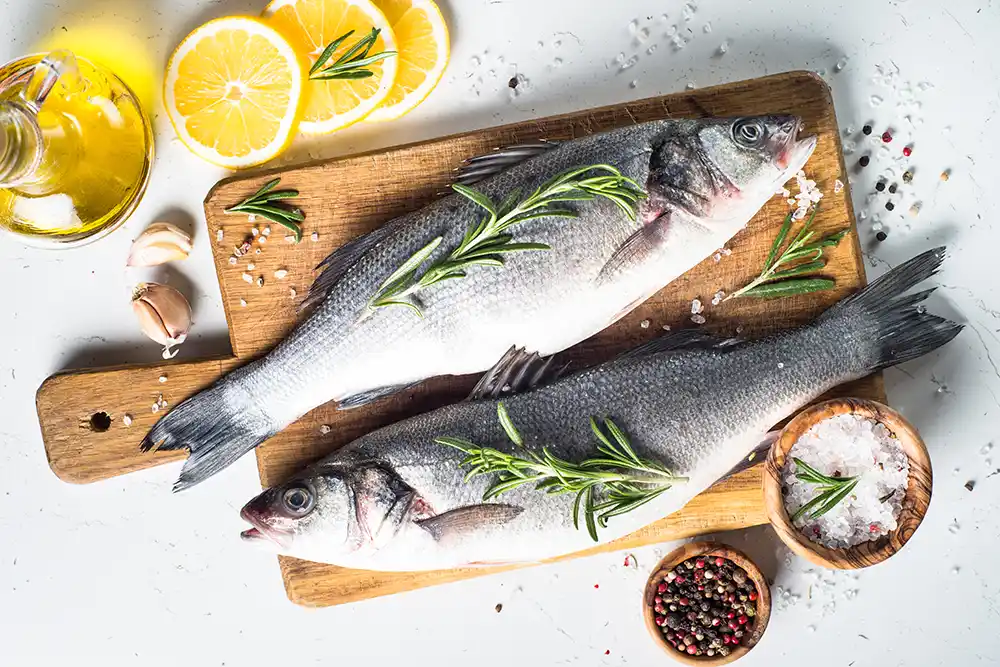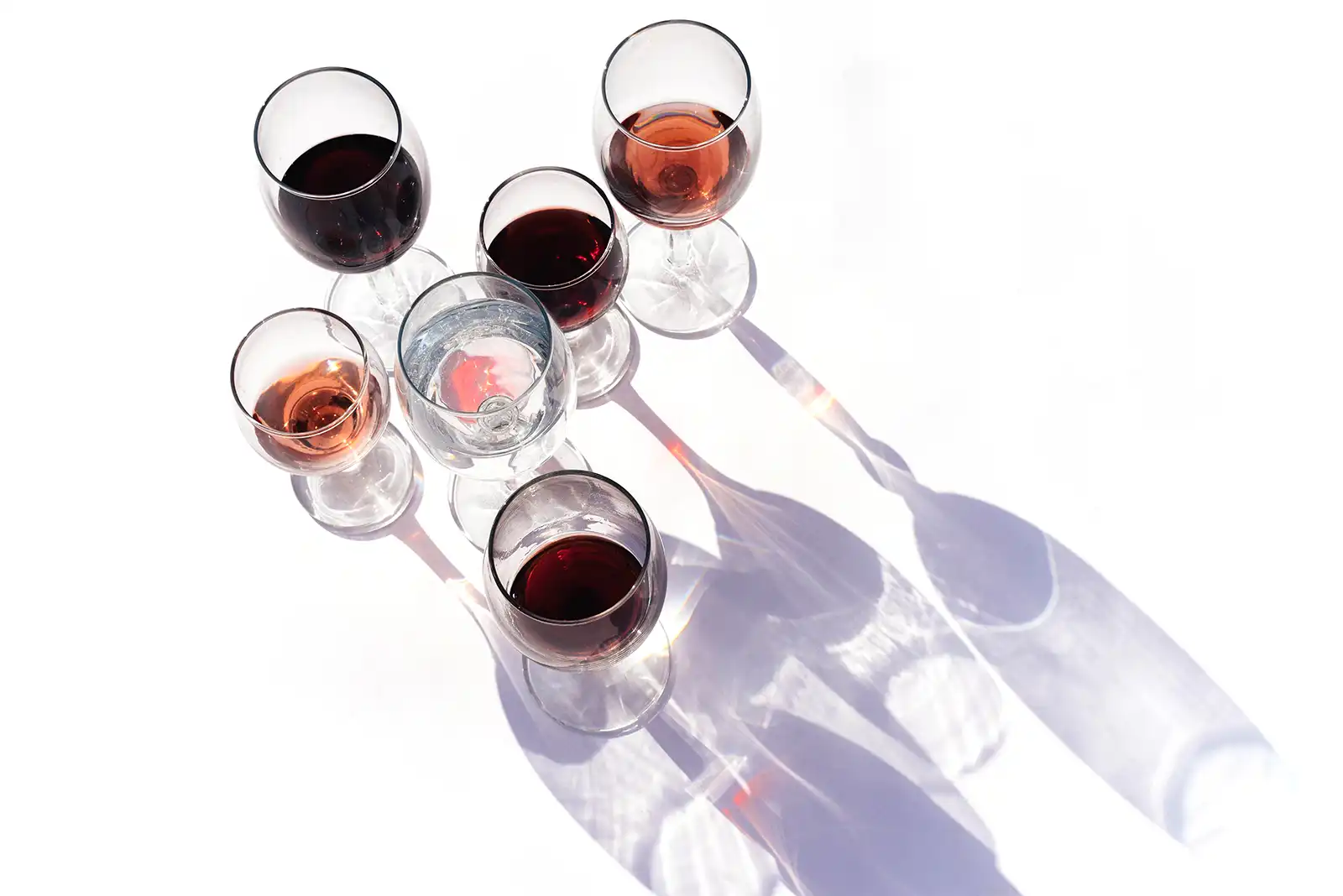Diet fads come and go, but a way of life has a little more endurance. If you’ve had any run-ins with heart health issues — either for yourself or a loved one — then you’ve surely heard about the Mediterranean lifestyle (or Mediterranean diet), which is recommended for improving heart health about as much as Tylenol is recommended for headaches.
“All I have to do is live like an Italian and eat things with olive oil and wash it down with red wine? And voilà my ticker will improve? Great!”
Someone Who Really Needs to Consult a Physician
The allure is easy to understand because its tied to a daydream: oh, all I have to do is live like an Italian and eat things with olive oil and wash it down with red wine? And voilà my ticker will improve? Great!
Of course, it is not that simple.
Wine is alcohol, and alcohol is toxic. And while its true that extra virgin olive oil, whole grains and more fish can help you turn the tide on cholesterol numbers and blood pressure, they have to be paired with a more active lifestyle.
I am in my mid-forties and last year, it was my turn to be told by my doctor “clean up your act.” Let’s just say some of my numbers were high, and this being America, they recommended a diet of pills to lower those numbers.
Not so fast, I replied. What’s this I hear about the Mediterranean diet?
Understanding the Mediterranean Diet
The Opening a Bottle community is filled with passionate wine lovers from all sorts of backgrounds. We have doctors and lawyers — as you’d expect on a wine website — but also experts on everything from sustainability to cryptocurrency, public relations to knitting. I’ve gotten to know so many of them over the years during my regular wine classes, and it has been a genuine delight to hold court with so many bright and unique people.

Among them is Kym Wroble, who is not only the Chair of the American Wine Society’s Chicago chapter, but a registered dietitian as well.
We got to talking about the Mediterranean diet and how wine fits into the equation (and also how it doesn’t). It is a subject that’s near and dear to her heart, and we quickly realized that this would make for an interesting article.
Here’s where the disclaimed comes in: I did not seek out Kym for medical advise, nor is this article intended as such. It goes without saying: consult your physician. In fact, consult more than one.
As wine lovers, we all need to balance this passion of ours with moderation, and I was genuinely curious about how alcohol (but really, wine only) might fit into this particular diet. Are there any real health benefits to wine? What do we know about how wine interacts with the key principles of the diet? And do any of these benefits extend to white and rosé wine?
As a registered dietitian, Wroble knows very well. We will have two more future articles together — one on the World Health Organizations guidance of “zero alcohol,” as well as another on that stubborn topic of red wine headaches and what causes them. I’m excited to have Kym contribute her expertise to this site.
Our Conversation on the Mediterranean Diet
Kevin Day: What is the current definition of the Mediterranean diet and what role does wine play within it? Is wine fundamental to the Mediterranean diet, or is it just a frequent complement to the diet?
Kym Wroble: Yes to both, but this is complicated. Let’s talk about the “Mediterranean diet” by backtracking and saying the Mediterranean diet is part of the “Mediterranean lifestyle” and any benefit that anyone is going to get from following the Mediterranean diet is because it is in conjunction with the facets of the Mediterranean lifestyle.
There are a few key components of the Mediterranean lifestyle; being physically active, being a nonsmoker for the last 15-plus years, a moderate alcohol intake and adherence to that Mediterranean diet.
“The key component with wine is that there’s a Mediterranean way of drinking, and that’s small amounts of red wine, with meals, with friends.”
Kym Wroble
Registered Dietitian
So then what does the Mediterranean-diet pattern look like? That’s also not a short and simple answer. There’s not a specific diet model. It’s a broad collection of the traditional dietary habits of people who live in those countries in and around the Mediterranean Sea. Of course, Italy versus Greece or even Italy versus Sardinia — there are cultural and dietary differences between and within those places. However, there are several commonalities and that’s what we’re referring to.
For instance, it is a diet that’s largely plant-based, and that’s a huge factor. As a health professional, I think that’s one of the most beneficial components of the “diet.” What that means is low to moderate consumption of animal products. Animal products are not completely avoided, but the amount consumed is much lower than what we in the U.S. and in other Western countries consume.
It is largely built on whole grains — you know, pasta, cereal grains, or even just regular whole-grain bread — as well as legumes, nuts, fruits and vegetables. That’s the bulk of their plate, the bulk of their diet. Then it is complemented with moderate amounts of protein foods, most of it through dairy, fish, poultry and eggs.
Then you’re going to have minimal red- or processed-meat intake, and when you look at the patterns inside these countries, it is generally less than a serving per week, maybe one to two.
Another key component that is often overlooked is olive oil as their primary fat, and there’s tons of benefits to olive oil, which we can come back to.
Water is their beverage of choice, and then when you get to wine, that is kind of an optional thing. But the key component with wine is that there’s a Mediterranean way of drinking, and that’s small amounts of red wine, with meals, with friends.
And then I would say the last facet is, of course, that preference for local, seasonal, fresh ingredients. You know, they’re not doing processed food like we are. They’re going to the market every day, every other day, shopping fresh and that’s often from nearby farms. They are buying fresh ingredients, fresh ingredients to turn into a meal, not boxes or packages of premade food.
Kevin Day: Let’s go back to the sociability part of wine drinking. Why is that baked into the diet or lifestyle? Why does it matter that they are not drinking alone?
“We don’t fully understand the social component of the diet or give it the credit that it is due, but it has a role.”
Kym Wroble
Kym Wroble: Well, a couple things. One, when you’re having a meal with friends, you tend to have a longer meal, right? And so, for the duration of that meal, you’re having wine but you’re sipping it slower because you’re also having conversation. Research in general shows that people that consume meals together — whether that’s with friends or family — they tend to consume more nutrients. That generally means they have a more varied diet, they’re getting more of those nutrients they need for survival — so it’s just a healthier, overall balanced diet.
But with that, when you’re drawing out the amount of time that you’re taking in that alcohol, it gives your liver more time to clear that alcohol from your system, which slows your blood-alcohol content from rising too quickly and can also just result in a lower blood-alcohol content in general.
The presence of food may also reduce the amount of alcohol available to mouth bacteria, which start to metabolize ethanol/alcohol into acetaldehyde — a byproduct of alcohol metabolism. When you are exceeding your body’s ability to eliminate alcohol, that byproduct builds up and we know that acetaldehyde is a compound that is associated with tumorous cancers of the upper gastrointestinal system. It’s toxic and can contribute to tumor growth and cancer.
Having alcohol with food also reduces glucose bioavailability — which is demonstrated by the glucose lowering effects of moderate wine consumption. However, that can be dangerous for those with diabetes, as glucose levels can drop so low it causes complications. So those that have diabetes need to be aware of this.
The other part — which we actually learned a lot about during COVID — is how being social impacts mental well-being and stress levels, and what it can do for your overall wellness and cognitive function. And let’s face it, the presence of alcohol might encourage people to get out and be social, and thus reap some of those social benefits.
So I think there’s a lot at play there. We don’t fully understand the social component of the diet or give it the credit that it is due, but it has a role.
Kevin Day: How do you measure “a serving” of alcohol within the Mediterranean diet? Is it based on the alcohol level, and secondly, are red and white wines treated differently in this measurement?
Kym Wroble: Depending on the population — and even the country — the definition of “moderate intake” differs. According to our dietary guidelines here in the U.S., one drink a day for women and up to two drinks a day for men is considered “moderate.” And we base our “drink” on 14 grams of pure alcohol. Generally, that’s like 12 ounces of a regular beer at 5% ABV and about 1.5 ounces of tequila, bourbon, or any sort of distilled spirit. And with wine, that’s going to be a five-ounce glass at about 12% ABV.
Kevin Day: That’s really low. Most wines are higher than that.
Kym Wroble: Yeah, and especially with climate change, the alcohol levels are only going higher.
So those are the standards here. In other countries, based on their population, sometimes it’s up to three drinks a day for women and four for men. So it does differ.
I looked into the Mediterranean countries — what’s traditional and their diet — and it is similar to one to two drinks per day, but generally it is even less. I’ve also read about some interesting drinking patterns where they might have like two ounces at a time — in the morning, and then with lunch, and then with dinner and so on. So it’s almost like they’re having a tipple all day long. But it’s never a huge amount. Now you also asked about white versus red wine …
Kevin Day: Yes. Between red, white, sparkling and rosé, do we find that one of those wine categories is more associated with the benefits of a Mediterranean diet?
Kym Wroble: When you’re looking at the Mediterranean lifestyle or Mediterranean diet and the beneficial components, then you’re primarily talking about red wine.
“There are other types of polyphenols in white wine, but research has not yet shown that they have those strong health benefits as do polyphenols in red wine.”
Kym Wroble
The reason for that is because most of those beneficial components of red wine are found in what we call polyphenols, which are a type of antioxidant. You can think of antioxidants as like a vitamin and mineral 2.0. They are a step up. Vitamins and minerals are things that we need to live. Without them, we will die. Antioxidants are things that we don’t necessarily need, but they help fight off short-term and long-term disease or illness.
The polyphenols in wine are found in the grape skin, and red wine is going to have more time in contact with those during the maceration process. There are other types of polyphenols in white wine, but the big difference is that in red wine you’re going to see drastically higher numbers of those polyphenols than in white wine. It will be about one gram per liter, whereas in white wine, you might only have one or 200 milligrams per liter. And then of course, rosé and skin-contact [amber] wines are kind of in the middle.
There are also other biologic compounds in red wine. One of the things that [these compounds] do, which I think is so cool, is increase the “bioavailability” of other nutrients. That means that it makes other nutrients more accessible to your body in order to take advantage of those disease-fighting capabilities.
An example of that is when you consume red wine and olive oil with red meat. In some ways, red meat is not necessarily the most healthy type of protein to consume, because it can result in damaging compounds being created in your body and the fat profile is not nearly as beneficial to health as other types of proteins. However, when you consume red wine and olive oil with that red meat, both the polyphenols from the olive oil as well as the red wine have an ability to protect against some of that damage. It could be a drizzle on your steak, it could be in the vinaigrette in your salad. And it doesn’t have to be both. You can just have olive oil with your steak and get some of that benefit. You could have red wine with your steak and get some of that benefit. Put it all together with a slow, family meal … that’s “the secret sauce.” That’s why it’s so important to consider it as a whole, as a lifestyle, to get all of the benefits.
Mediterranean Wines to Complement This Diet
Aglianico del Vulture
Southern Italy’s Aglianico has a very high polyphenol content, and in the region of Basilicata, it reaches one of its many apexes with the wines of the Aglianico del Vulture DOC. Volcanic soil and a balanced climate yield wines of compelling complexity and versatility. Look for Elena Fucci and Grifalco.
Xinomavro
Greek wines are not to be overlooked, and of the grape varieties most commonly found on the American market, Xinomavro packs some of the highest concentrations of polyphenols [PDF study, opens a download]. Look for Kir-Yianni and Alpha Estate.
Priorat
In Northeastern Spain’s legendary Priorat DOQ you get a smattering of blended wines from grapes high in polyphenols — Grenache, but especially Carignan and occasionally Cabernet Sauvignon. But more importantly, these wines taste Mediterranean. Look for Clos Mogador and Cellers Ripoll Sans.
Cerasuolo d’Abruzzo
So which rosé has the best potential to unlock “bioavailability” with its polyphenols? I’d look to Cerasuolo d’Abruzzo, which leans heavily on the anthocyanin- and polyphenol-rich Montepulciano grape, but often with longer maceration times to yield a richer color. Consult my First-Taste Guide and look for Tiberio, Cirelli and Torre dei Beati.

Subscribe to Opening a Bottle
Our passion for Italian and French wine is evident in every article we write. By joining Opening a Bottle, you gain access to the entire site, including live and recorded wine classes, individual wine reviews written without any BS, and the curated lists of the best producers in Italy and France. Coverage is also expanding to Austrian wine.
Subscriptions cost just $49/year or $5/month. We also offer professional group subscriptions.





